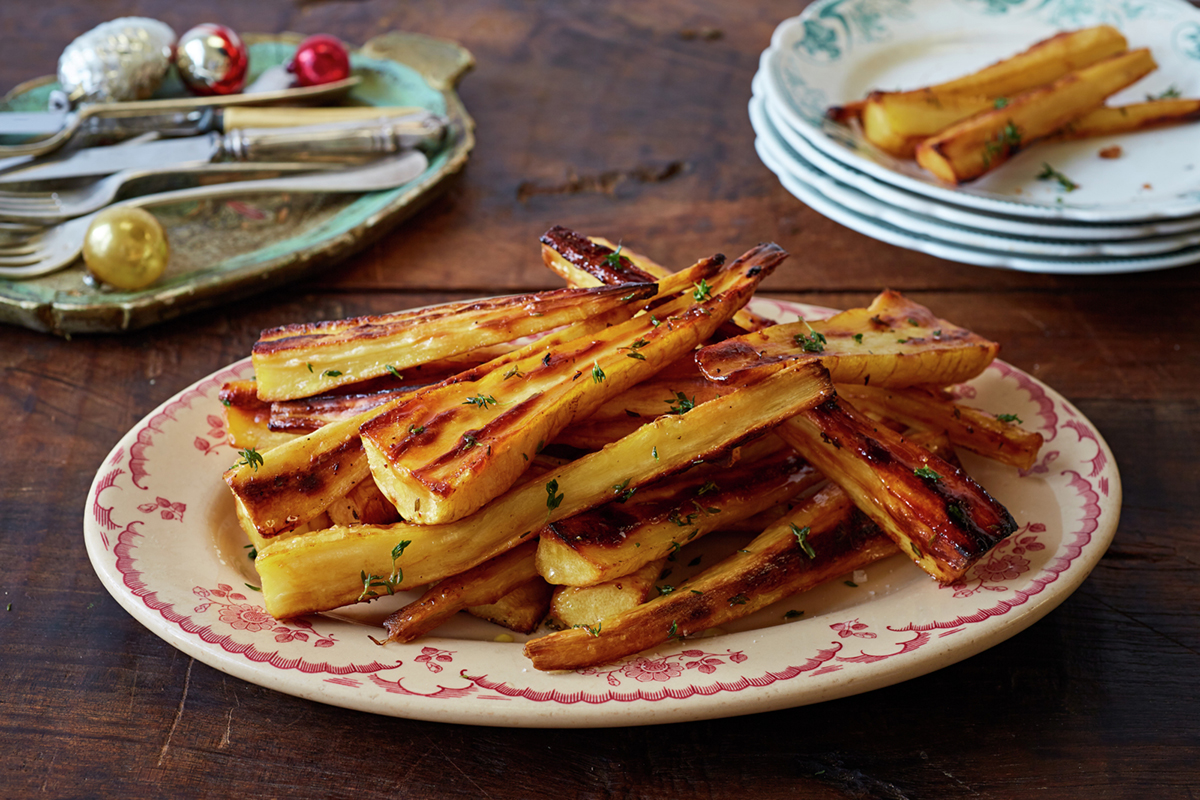
For savory results, season with broth and herbs and for sweet, cook as you would sweet potatoes, with orange juice, brown sugar, ginger and nutmeg.

Put whole or cubed parsnips in a covered baking dish. FYI: 1 pound parsnips = 4 servings 1 pound = 4 to 6 small parsnips 1 pound = 2-1/2 cups diced, cooked parsnips Baking Note: Peeled and trimmed parsnips will turn dark when exposed to the air so cook them immediately or keep them in water with a little bit of lemon juice until ready to cook. Be careful not to overcook parsnips as their flavor is sweetest when just tender. Larger parsnips may need to be peeled and have their woody cores removed before cooking. If the parsnips are small and young, you can clean with a vegetable brush instead of peeling. It also does quite well microwaved, steamed or boiled.īefore using, rinse well, trimming the root and leaf ends. They have a nutty, spicy, peppery flavor that is well suited to longer cooking times, as in casseroles and stews, or oven-roasted on their own. Parsnips are suitable for almost any method of cooking including baking, boiling, sautéing and steaming. Fully cooked parsnip purée may also be frozen for up to 10 months. Parsnips can be frozen for 8 to 10 months. Pack into freezer bags or containers, leaving room at the top. To freeze, select small to medium, firm parsnips that are tender and have a mild flavor. Do not wash before storing.Ĭooked parsnips can be refrigerated and used within three days. If the green tops are still attached, remove them before storing, or they will draw moisture from the roots. Parsnips store well for 2-3 weeks in a perforated plastic bag in the refrigerator vegetable crisper. If the leafy tops are still present, they should look fresh and green, not limp, wilted or browning. Most parsnips are sold with their tops already clipped. Parsnips that aren't well-shaped require extensive trimming to prepare the vegetables for cooking. Choose parsnips with a creamy-white, smooth, firm surface.Īvoid irregularly shaped parsnips if you're concerned about wastage. Dark spots can indicate decay or freezer-burn. Avoid limp, shriveled or spotted parsnips as they are likely to be more fibrous. The roots should not have a lot of hair like rootlets. Look for small to medium, well-shaped roots. Varieties include All American, Hollow Crown Improved and Harris Model. They can grow up to 20 inches long but they are most tender when about 8 inches, roughly the size of a large carrot. They range from pale yellow to off-white. The main commercial varieties of parsnip are similar in size, taste and color. Parsnips are also packed with falcarinol, a phytochemical with anti-inflammatory and anti-cancer properties. One cup of cooked parsnip has 5.5 g of fibre, 572 mg of potassium, 20 mg of vitamin C and almost one-quarter of a day’s folate. You can also peel and slice parsnips a few nights before cooking, but they do brown when cut and exposed to air, so store them in an airtight container filled with water and 1-2 teaspoons fresh lemon juice.They may be white, but parsnips are surprisingly nutrient-dense. You want them to be the same shape and size, so they cook evenly, and all the pieces finish simultaneously.

Once the parsnips are washed and peeled, cut them into ½-inch thick rounds or strips. Whether you leave the skins on or off the parsnips, make sure to remove the tops and scrub them gently with warm water to remove excess debris before slicing. Larger parsnips have thicker, rougher skins that are best peeled away.
#Cooking parsnips skin
Younger, small parsnips have tender skin that doesn’t need removing. Should You Peel Parsnips before Roasting? That’s because roasting brings out the natural sugars in vegetables, giving them a depth of flavor that can’t be achieved when steamed. While parsnips aren’t exactly appealing raw, they acquire a nutty, caramelized taste and fork-tender texture when roasted.

Just trim off the green tops and refrigerate for 3 to 4 weeks. Small to medium parsnips tend to be sweeter and more tender, while large parsnips can be a bit fibrous.Īs with potatoes, beets, and most root vegetables, parsnips have a long shelf life. When shopping for parsnips to cook, look for ones with firm skin and few to no spots or bruises. It’s one of my favorite ways to turn vegetables that usually go uneaten into a dish everyone will be asking for seconds like we did with Roasted Radishes & Carrots. It’s a great time to take advantage of their delicious benefits and roast them with oil and seasonings. You’ll find parsnips in abundance during fall and through early spring. They are cream-white in color and have a starchy texture, but all of this changes in the oven. Parsnips are a root vegetable that shares the shape and slightly sweet flavor of carrots with a peppery flavor.


 0 kommentar(er)
0 kommentar(er)
